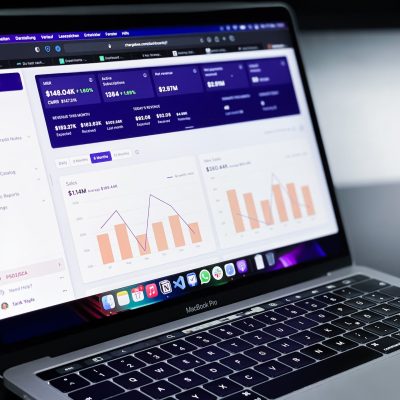To ensure the success of your business, it is essential to have a deep understanding of your customers. This includes knowing which individuals are likely to purchase your products or services and why. To gain this understanding, you must conduct thorough research and approach it with empathy. Empathetic research involves the ability to relate to and comprehend the emotions of your core users and customers.
Empathetic research is utilised heavily in the User Experience (UX) and Design Thinking fields, which are closely related. We recommend our clients utilise these methods to inform their business decision making wherever possible.
Elyse has been working in UX since the early 2000s and I have been heavily involved in the field since around 2010. I also lecture in Design Thinking at the Australian College of the Arts.
As a quick note: throughout this resource, I interchange between words such as customer and user. They mean much the same thing, although I have deliberately chosen to use both terms. While customer feels more personal than user, I also think it’s important that any research focuses on any interaction with your business, and that may not always be from current customers.
What’s the point of doing user research?
Research is imperative when producing innovative new business ideas and is also important for established businesses.
Doing research about your core user does not mean you have to change your product or service to suit them (although it might). At its core, the point of research is to be sure you’re targeting the right people with the right message. It’s also to ensure that you’re helping them understand the value of what you’re selling. User research is also imperative if you plan to do any meaningful customer acquisition and retention activities, such as User Journey Mapping.
Tools like these can then help with decisions around website planning, content strategy, SEO factors, where to focus PR efforts and so much more.
Let’s look at a few overarching reasons why customer research is important for business.
Understand customer needs and preferences
Customer research helps you to understand what your customers want and need, and how they feel about the products or services you’re offering. This information can be used to inform product development and marketing efforts and to ensure that your business is meeting the needs and expectations of its customers.
Identify opportunities for improvement in your business
Performing research can also help you identify areas where the customer experience can be improved in your business. You’ll likely uncover unknown pain points or frustrations that you can then address. You may also find opportunities to offer additional products or services that meet the needs of your customers.
By understanding the needs and preferences of your customers, you can create a better customer experience, which can help to build customer loyalty and increase the likelihood of repeat business.
Inform your decision making
User research can provide valuable insights that can inform business decisions, such as whether to launch a new product or service or how to allocate resources to improve the customer experience.
If someone says that it’s raining and another person says it’s dry, it’s not your job to quote them both.
Your job is to look out the window and find out which is true.
Someone, some time ago
Some common questions that you might want to investigate include:
- Who are the typical people in the situation that my product or service accommodates?
- What are their needs?
- How do they currently fulfil their needs? (met & unmet needs)
- Does our (new or existing) product or service fulfil their needs?
In short, we need to be able to empathise with the user we are designing for.
The key to good research is empathy

The most valuable user research insights often occur when actual users are involved. Stakeholder engagement and analytics research are valuable and effective elements of the discovery phase of a project, but these measures alone are often unable to answer all questions around user needs.
You need to truly understand who your customer is and what they need.
How do we ‘do’ empathy?
There are several types of user research that involve engaging directly with users. These include interviews, surveys, observation, and immersion, among others. We’ll be discussing all of these and more later in this resource.
The next image is a commonly used representation of the value of research and empathy.

The first image depicts parents looking lovingly into a cot. In the cot are a baby and a hanging mobile with animals on it. We can see what looks to be an elephant, a tiger, a pig, and a fox. One parent exclaims “I love it!” and the other parent exclaims “me too!” We assume they are talking about the mobile, as it does look rather good.
The next image is of the baby looking up at the mobile. The view from the baby’s perspective is quite different. All the baby can see is the rear ends of all the stuffed animals.
The image can be interpreted as the parents representing the business owner, and the baby is the business’ customer. The hanging mobile represents the product that the business sells.
From the business owner’s perspective, the product is fantastic. It’s cute and cuddly. It looks at them and it makes them feel good. It suits their needs.
When looking at the product through the customer’s (baby’s) eyes, it soon becomes clear that the product does not suit their needs at all.
The value of research
The clear benefit of research is to avoid the issue represented above.
From a marketing perspective, advertising guru David Ogilvy has a few things to say on the matter:
“Advertisers who ignore research are as dangerous as generals who ignore the signs of the enemy”
“If you don’t start doing your homework, you won’t have a chance in hell to produce advertising that’s successful and that sells”
“If you don’t know who you are writing for, then you’ll just be faking it…”
He also said:
You’ll never be able to write an effective copy if you ignore who you’re writing for, how that person thinks, and what that person needs.
The exact same thing can be said for starting a business or trying to solve a problem.
No matter how good your idea is, you’ll never be successful if you ignore:
- who your target customer is
- how that person thinks
- what that person needs
You then need to be able to answer the question of what problem are you solving for them?
The formulation of the problem is often more essential than the solution
Albert Einstein (maybe)
Qualitative vs quantitative information
Research findings can be broken down into qualitative and quantitative information. If we ask someone if they caught the bus to work this morning, then we will be given one of two answers – YES or NO. This is quantitative data.
If, however, we were to say to someone “tell me about your morning”, we’ll find out a lot more than if they caught the bus to work or not. This is qualitative data as the answer is far more than just yes or no.
If you’re confused by which is which, try and remember that:
Quantitative = Quantity (ie: numbers)
Qualitative = Quality (ie: descriptive and interpretive)
Let’s dig a little deeper…
Quantitative research is numbers and easy to quantify

Quantitative research gathers data in a numerical form. You see this in questions where you can only answer true or false, or rank things on a scale. Quantitative answer design is used a lot in surveys as it’s much easier to ‘crunch the numbers’ than it is to read a whole lot of short-answer responses.
From that data, graphs and tables can be constructed fairly simply.
Examples of questions that produce quantitative data include:
What is your age?
- 18 – 30
- 31 – 50
- 51 – 70
- 71 and above
Rate your shopping experience
- 5 – Excellent
- 4 – Good
- 3 – OK
- 2 – Poor
- 1 – Very Poor
How did you get to work today?
- Bus
- Train
- Taxi / Uber
- Drove myself
- Some other method
The main advantage of quantitative data is that large samples can be used to produce generalisable results. You could send questions out like those listed above and find some interesting data fairly quickly. As an example, you might be able to see that your surveyed customer base is mainly aged between 18 and 30, catch the train to work and on average rate their shopping experience as 3.6.
The main disadvantage is that you can’t delve deeper. Let’s look at the question about someone’s shopping experience. If someone rated this as “1 – Very Poor”, we can’t ask why it was a very poor experience. If someone ticked “some other method” for how they got to work, we have no opportunity to find out how they got to work. Maybe they walked, ran, or caught a ferry. We’ll never know.
Qualitative research is words, thoughts, and feelings

Qualitative information is from interpretative research and is not based on numerical analysis. As researchers, we observe and interpret what we see, hear and feel.
Qualitative research can often be unstructured and free form, where the researcher is intimately involved, and results are subjective. Wherever possible, sample sizes are small, and the research is done in natural settings.
As an example, if you were researching public transport, you could interview someone as they step on or off a train to ask them questions about their reasons for catching the train that day.
Qualitative research plays a huge role in user research and is imperative for gaining meaningful insights into your audience and their needs.
Let’s look at some common research methods, as well as some of their advantages and disadvantages.
Stats and analytics

Gathering statistics and analytics is an effective way to start the research process. You can easily obtain audience overviews from Google Analytics, as well as other valuable insights from social media such as Facebook, Instagram, or any other social network your business is using.
Your business might also utilise other data-gathering tools, such as heat mapping and session recording software.
Advantages of using analytics
The primary advantage of having readily available statistics and analytics is the ease of getting the data. Tools such as Google Analytics or Microsoft Clarity will display easy-to-read pie charts and bar graphs, so the information is much easier for you to digest.
This data can be extremely helpful in giving you ideas about your core audience, and possibly some of their other areas of interest, as well as motivations.
Disadvantages of relying on analytics
The data gathered here is all quantitative. You might learn valuable information about age, gender, some interests etc and while all of that is useful, it only tells us what is happening. It does nothing to tell us why it’s happening.
Examples of useful statistics and analytics
You might note in your analytics that people are adding products to their cart, but then only 30% of customers are actually converting and checking out. This is important to know, but we don’t have any idea why it’s happening.
You might note that some long-form articles on your site generate more leads than short-form ones, but again, you don’t know why.
This is why we need to do more research than just check Google Analytics every now and then.
The most common analytics that most businesses should refer to regularly include:
- Google Analytics
- Microsoft Clarity (heat mapping and session recordings)
- Facebook Insights
- Instagram Analytics
- any other social networks the business uses, such as LinkedIn Analytics, YouTube Analytics etc
Questionnaires & online surveys

Surveys can be a useful way to gather some high-level insights although they can be problematic, so no major decisions should be made from survey results alone.
With tools like Google Forms and Survey Monkey, surveys are easy to set up and cheap to distribute.
Advantages of surveys
Surveys can be a quick and inexpensive way of measuring user satisfaction and collecting feedback about the product or experience. They’re particularly useful if you have a large existing user base.
Surveys can sometimes offer more honest answers than face-to-face research methods, such as interviews or focus groups. This can be due to the respondent not feeling judged or having to answer why they feel a particular way about something. Online surveys are often anonymous too, which can give rise to more honest answers.
You may find some interesting insights from your surveys that could indicate the need for a deeper qualitative test and inform the basis of further interviews and observation.
Qualitative data is far more valuable for user research, but quantitative questions can help get to the crux of the problem quickly is time and/or money is tight.
Disadvantages of surveys
The major problem with online surveys and questionnaires is that the questioner can’t probe further. As we noted earlier, quantitative questions don’t give you the opportunity to delve deeper.
Surveys can also have low participation rates.
Examples of good survey technique
If you’re going to use surveys in your research, then go for quantitative responses and keep the questions minimal. In our experience, 8 – 12 questions tend to yield the best results. If you’re asking more than that, the respondent is far more likely to close the survey and move on with their day.
If you feel it’s appropriate, ask the respondent to leave their email address on the survey so you have the opportunity to follow up with an interview.
Interviews

One-on-one interviews can be a productive way to connect with real people and gain insights. They are an integral part of any type of user research. Speaking directly with the people you’re creating for can often be the best way to understand needs, hopes, desires, and goals.
You can do interviews in person, over the phone, or online with tools such as Zoom, MS Teams, or Google Meet. Really, so long as you can talk with someone and probe for answers, then you’re on your way. Theoretically, you could do an interview using Messenger or Chat software, although our experience with this has been less than spectacular.
User interviews can be general and open questions about users’ feelings towards a product.
The purpose of these interviews is to examine attitudes, beliefs, desires, and expectations in order to gain a better understanding of the user base.
Advantages of interviews
Interviews offer the primary advantage of the ability to seek feedback and probe further.
Participation rates can be high for interviews, and if it’s clear that the interviewee is getting bored or restless, you can wrap it up early and make sure you ask the most important questions.
Disadvantages of interviews
While interviews can be excellent for gathering information, they’re not perfect.
Sometimes, the interviewer’s characteristics and techniques may influence respondents’ answers. This may be because of any bias of the interviewer (we’ve all seen this with some political interviews) and could also be from the interviewer just not being very good at interviewing people.
Another disadvantage is that some respondents may not be completely honest because of their lack of anonymity. In short, it might embarrass someone to give a controversial opinion when asked by a person. Asked the same question in an anonymous survey and they could be more inclined to be honest.
Interviews also take time, which means they cost money. Sending multiple staff out to interview people, and then analyse that data can be very costly. This is one reason smaller sample sets can be beneficial here.
Examples of good interview questions
Good interview questions are going to depend on the context of the interview. For interviews to be worthwhile, be sure to ask questions that go beyond simple yes or no answers.
As an example, you could ask someone how they got to work today, and they might give a response like “I caught the tram because my car was being repaired. Normally I drive.” From that response, we get far more context than a survey question where they would have ticked the “tram” option for the “how did you get to work today” question. With that response, you could also probe further with a question like “why do you normally drive?”
You can also use props and visual aids when interviewing someone.
Focus groups

Focus groups are like interviews except with more than one person. They’re a moderated discussion that typically works best with around 5 to 10 participants.
As with most research, focus groups should be with people in your target market. Focus groups can be an effective way to get feedback quickly and efficiently from a sizeable group of people. Using this approach across the group can help to identify common pitfalls in whatever you’re researching and identify areas for improvement.
Advantages of focus groups
You have the opportunity to ask questions and test out ideas. You can learn about users’ attitudes, beliefs, desires, and reactions to concepts. A big advantage of focus groups is that you can get some great quantitative responses from your group.
Focus groups can also be great when testing and brainstorming new ideas, as the group can add to each other’s thoughts and opinions (a technique known as laddering).
Disadvantages of focus groups
They can be valuable for getting some quality overarching opinions, although have their drawbacks as well. Focus groups can be problematic as respondents may not be comfortable offering their true opinion for fear of being judged by the rest of the group.
In the same way that laddering can be good, it can also be problematic, as some larger voices in the room can take over, while others don’t feel they have the opportunity to speak up and disagree.
Examples of focus group questions
A focus group that I commonly run is with students who have just completed their final assessments for their degree and are about to graduate.
This can be an excellent opportunity to gain feedback about the course they have completed, as well as which subjects the students felt provided the most value. Having this in a group, as opposed to individual interviews, gives the opportunity for ideas to flourish.
Focus groups can also be good for seeking feedback from users of your product. The moderator could invite participants to recall particular interactions with your product or service.
Observation

Observation is the process of observing and recording the behavioural patterns of people going through everyday activities.
There is no questioning or communicating with people when you employ observation. As the researcher, you witness and record information as events occur.
Observation can be controlled or naturalistic.
Controlled Observation is in an environment such as a testing lab and is pre-arranged. While this sort of observation can be very useful (such as website usability testing), it can also be problematic simply because the subject knows they are being observed.
Naturalistic Observation is when you observe people performing a task ‘in the wild.’ As a retailer, you could observe and note the different behaviour between customers of different age groups or genders. You might observe differing buying patterns depending on whether someone is shopping alone or with friends.
Advantages of observation
The greatest value that research methods like observation bring to research is that you’re moving away from what your customer says, and more into what your customer actually does.
There’s a quote that’s incorrectly attributed to Henry Ford that states, “If I’d asked people what they wanted, they would have said a faster horse.” While the attribution is inaccurate, the sentiment is worth noting.
Observation allows you to see your customers actually doing things.
By using observation, you can repeat and systematically record your research. This allows for the possibility of replication and to also easily note edge cases.
Disadvantages of observation
When observing, it can be tempting to assume the feelings and thoughts of the subject. You might observe that someone tries on an item of clothing but doesn’t buy it. You won’t know why they put it back on the shelf. Was it the wrong fit? The wrong colour? Or something else entirely?
Observation can be extremely valuable, although backing it up with intercept interviews means you can understand much of what’s happened.
Observation example
If you’re looking into how people use self-checkout at the supermarket, you could observe people using the checkout at various grocery stores and make note of their behaviour.
You might notice different outcomes depending on the situation:
- Are they using cash or a credit card?
- Are they part of a rewards system and what method do they use to use that rewards system?
- Do smaller or larger trolley loads change outcomes?
- What are the most common reasons for needing assistance?
- Does the customer’s age have a bearing on whether they use self-checkout?
In that scenario, you’d also observe customers who are utilising the checkout that has an operator, and then noting any core differences.
By observing, we can see the user in their ‘real world.’
We need to:
- Record the details (not assumptions) of what has happened.
- Analyse how the person is doing what they are doing
- Make notes if they’re exerting a lot of effort (are they smiling, frowning?)
- Make educated guesses regarding the person’s motivations and emotions, although, as noted, these should ideally be backed up with intercept interviews.
Another example could be noting purchasing behaviour within fashion retail. You might observe the difference in customer spending habits based on whether customers entered the store with their children or not. You might notice that people spend less (or nothing) when they’re with their kids.
When using this information in a Customer Journey Mapping exercise, the store could try adding a play corner for the kids and changing the usual upbeat music to something more relaxing in the few hours after school finishes and see if that impacts spending habits for those customers at that time of day.
Intercept Interviews

Intercept interviews often happen after observation. They can also be known as contextual interviews, as they’re held in the exact setting the product or service is normally used, therefore offering more context than a traditional interview.
They follow the same idea as a normal interview, except that you have more of an idea of any pain points or moments of joy the customer may have experienced.
The basic premise is to observe the subject, and then approach them to ask questions about their experience while it’s fresh in their mind.
Advantages of intercept interviews
Contextual questions tend to be more natural and sometimes more realistic as they directly relate to what the subject has just done. The process is often less formal than a traditional interview.
Intercept interviews can reveal highly detailed and nuanced behaviours that users may not even be aware of themselves.
Disadvantages of intercept interviews
Honestly, these can be pretty awkward unless done well. They’re often best used when in combination with another action, such as making a purchase.
Example of an intercept interview
As a retailer with a brick-and-mortar shopfront, you might notice that many customers are not joining your loyalty program when you offer it as you’re processing their order. You could ask some of your customers why they’re not keen on signing up.
Some might respond that they already get too many emails and others might respond saying it’s not worth it as they don’t shop in your store often enough.
Both answers can then be considered. To tackle the first issue, you could change how you introduce the program to ensure that your customer knows the emails are monthly at most and are only sent if they directly benefit the customer.
Immersion

Immersion is when the researcher experiences what the user experiences. This is also sometimes called shadowing.
If you own a retail outlet, then go shopping as a customer. Go to your competitor and buy something. How does it feel? What are the shop assistants like?
Are you investigating self-checkout at supermarkets? Well then, go to Coles, Woolies or any other supermarket that offers self-checkout and use it. Pick yourself a basket full of groceries. Make sure to get fruit and veg, as well as frozen and deli items. How does it go?
Presumably, you’ve already done some observation and interviews and maybe you’ve come to the conclusion that people can get confused when having to select what types of apples they’re purchasing. So, purchase some apples! Note how terrible or fantastic the experience is.
Immersion is an excellent way to truly empathise and try to understand the experience of the subject.
Advantages of immersion
The clear advantage of immersion is that you experience for yourself what your customer might be feeling. It adds authenticity and accuracy to your research, as well as building on the empathy which is so important when conducting customer research.
Unique perspectives and insights can be obtained that may not have been conveyed through other research methods.
Disadvantages of immersion
Immersion can be time-consuming and therefore expensive for a business owner to undertake.
There may be societal or demographic factors that differ between you and your customer that impact the level of accuracy that immersion can offer. Some might include differences in culture, income, and age.
It can also be difficult to maintain detachment when you’re trying to be objective about your own product or service.
Example of using immersion in your research
Let’s say you’re performing research on public transport in your city. While interviews, surveys, and observations are all going to give useful information, the act of getting on trains and buses yourself is going to give you some great insights.
You’ll experience what it’s like to buy a ticket, find your correct stop and how to navigate the entire process from first-hand experience.
Why multiple research methods are needed
It’s important to not rely too heavily on one form of research. Customers can easily describe the problem they’re having, although not necessarily the best solution. One of the important factors to note with your research is to not ask what your customers want but to ask and observe why they need it.
Identifying the best answer to the problem is the critical challenge and is where user research can help bridge the gap between your business and your customers. This is where going beyond analytics and surveys is so important. Even immersion or observation by themselves can be skewed and influenced by bias, and a lack of understanding of why something needs creating or updating.
As demonstrated in this resource, all research methods have their strong points and it’s important to cover as many bases as possible. It’s also important to revisit research from time to time to see if your audience has changed at all, or if their need for your product or service has altered.
What do you do with all that research?
You need to act on what you find from your research. There’s no point in interviewing and observing your customers for that information to then sit in a drawer!
As the researcher, you’ll need to collate all findings and look for patterns in user responses and reactions. This can lead to the creation of personas and scenarios around how your product or service will be used.
Feedback gained through research methods will help to strengthen ideas and support business decisions. Observing competitor websites can influence your own website planning. Gaining an understanding of what questions your customers are asking can strongly influence your content strategy, as well as how you approach SEO in your business. Knowing what your customers read and do should influence your PR strategy.
The point is to never stop thinking about the human who’s going to use your product or service.

